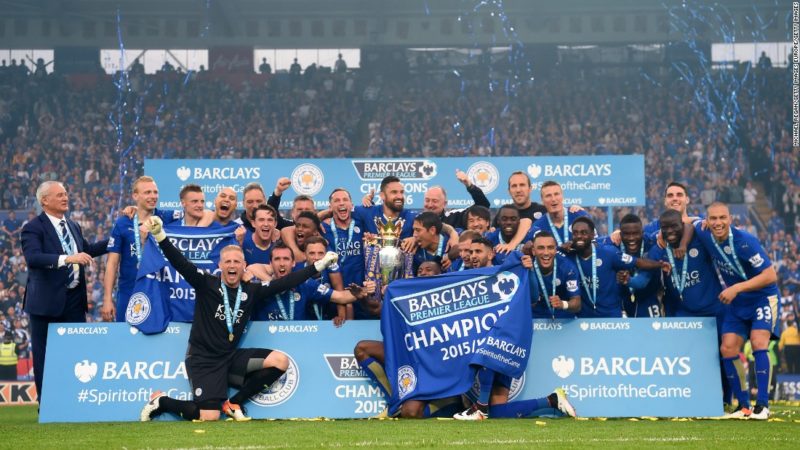Leicester City’s brand value is up 132% from last season, making the Premier League champion the fastest growing football club brand in the world.
Every year, brand valuation and strategy consultancy Brand Finance conducts a unique study, calculating the brand strength and value of the world’s leading football club brands. The results are published in the Brand Finance Football 50.
Manchester United tops the table again with a brand value of £793-million. A relatively weak, fifth place league finish meant failure to qualify for the Champions League and saw Louis Van Gaal sacked. However a first FA Cup triumph in over a decade and forecasts of continuing revenue growth softened the blow.
The new Premier League broadcasting deal saw the rights to the next three seasons’ games divided between Sky and BT Sport for over £5.1-billion, a 71% increase on the previous period, boosting the brand values of all premier leagues clubs and keeping United just ahead of a resurgent Real Madrid.
United may be number one, but Leicester have even more to celebrate.
The Foxes’ remarkable on-pitch performance has translated into a commercial fairy tale too. In just one year, the club’s brand strength score has increased by 13 points, while brand value is up 132%. Its brand value of £160-million puts Leicester 16th globally, up from 42nd in 2015.
At the beginning of the decade Leicester languished in the third tier of English football. As recently as 2012, sponsorship revenue stood at just £5.2-million. Revenues were £32 million in 2013-14 and £104-million in 2014-15, reflecting the cachet of Leicester’s new found Premier League status. This year’s unprecedented title win, it is estimated, will see Leicester receive an additional £150-million.
A club’s brand value is calculated by combining brand strength with revenue data across three major streams; commercial, broadcasting and matchday. With a capacity of 32,000, Leicester’s King Power stadium is one of the Premier League’s smallest, so matchday revenues are likely to grow only slightly. The same can be said for commercial revenues from merchandise as, despite Leicester’s Thai ownership and success this year, clubs such as Liverpool, Manchester United and Chelsea still hold sway in Thailand and wider Asia.
In the short term, Leicester newfound riches will flow from sponsors thronging to the club to capitalise on the club’s global visibility and heroic story as well as vast broadcasting revenues from the Premier League and Champions League, which will deliver a minimum of £20-million and likely significantly more.
‘Leicester’s success is something their existing sponsors will only have dreamed of and their return on investment has been spectacular,’ says Brand Finance Chief Executive David Haigh.
‘Armed with a thorough understanding of what its brand is really worth to potential sponsors, Leicester will now need to carefully manage the flood of offers and opportunities it receives to both maximise revenue and create partnerships that will reinforce the club’s brand as well as its bottom line.’
Real Madrid’s brand value is also in the ascendant after the club claimed yet another Champions League title, ‘La Undécima’.
In his short tenure, Zinedine Zidane has delivered on-pitch success, but just as significantly, is a fan favourite whose presence reinforces Real’s image as the natural home of football’s biggest stars.
Though no longer a player, he is undoubtedly a Galactico. The forthcoming renegotiation of La Liga’s TV rights, a massive €140m/year kit deal with adidas and an AAA+ brand whose strength continues to grow, mean that Real’s brand value is up £251-million to US$1.15-billion (€1.06-billion).
20 most valuable football brands:





